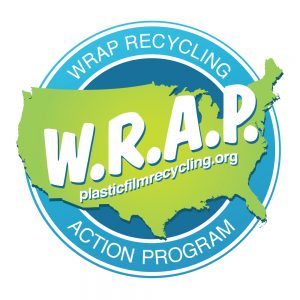There’s been a lot of negative news coverage on recycling. And while plastic recycling markets face serious challenges, there are areas that are making significant strides. One of those areas is plastic film recycling.
Earlier this month, I spoke with PlasticsToday about plastic film recycling, including industry initiatives that are helping to grow the recovery of plastic film.
In my interview, I cited the Wrap Recycling Action Program (WRAP) as an example of recovery rates that are increasing when consumers are given an opportunity to recycle their bags and wraps. One of the reasons opportunities are growing is because WRAP is partnering with cities and states to conduct successful consumer awareness campaigns about how to recycle plastic film. Its campaigns have led to more plastic film—both in volume and types of film—collected for recycling, and decreased contamination in the recycling stream. These achievements caught the attention of the U.S. EPA, which signed on as an official partner at the end of 2016. This year, WRAP is poised to launch additional campaigns at the state level.
While WRAP focuses exclusively on plastic wraps and film made solely from polyethylene, there are other programs working on the challenge of sorting and repurposing multi-material film packaging. The Hefty® Energy Bag gives communities an immediate opportunity to collect plastics that currently cannot be recycled, like these multi-material packages, and convert them into energy.
Meanwhile, the Materials Recovery for the Future (MRFF) project is researching long-term solutions to capturing and recycling film packaging. This research found that it is possible—from a technological and an economic standpoint—to recover film packaging at materials recovery facilities (MRFs) using existing sorting equipment. MRFF is continuing to research end-market opportunities for film packaging collected and baled at MRFs.
Check out the full interview on PlasticsToday to learn about other ways in which film recycling is making important strides and where the Division sees the value chain playing a role in recycling more plastic film.